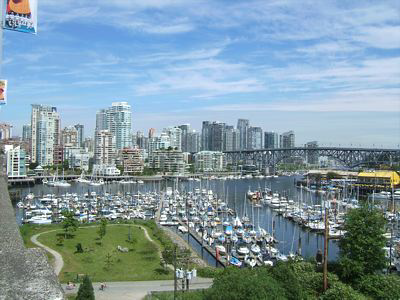No Light Rail in Vancouver!
Fraser Says: Dump Vancouver’s Growth-
A new report from the Fraser Institute — Canada’s free-

Nice views. But how many people would really prefer to live in these high-
Vancouver has been practicing growth-
In the early 1970s, one of the members of the GVRD board coined the term “livable region” to cover up the fact that they were writing a plan that made the region less livable. From then on, just about every planning document prepared by the GVRD made liberal use of the term livable, making good use of the Big Lie theory: repeat a lie often enough and people will believe it.
In the early 1980s, a recession led the province’s conservative government to revoke
the GVRD’s planning authority as “anti-
The resulting plan put more than 70 percent of the region off limits to development.
It vowed to spend virtually all of the region’s transportation capital funds on a
transit system that moved only about 10 percent of the region’s passenger travel
(and, needless to say, none of its freight). The plan also required all communities
in the region to densify and achieve a jobs-
As a result, the Vancouver region has the least affordable housing in Canada by far. It is tied with Toronto and Montreal in having the worst congestion in Canada. Housing affordability and congestion are only two measures of livability, but they were both explicitly mentioned in the Growth Strategies Act and both are ignored by GVRD planners who try to pretend that their plan is not responsible for Vancouver’s poor showing by these measures.
More than 70 percent of Canadians say they would prefer to live in a single-
Of course, thanks to the Livable Region plan, Vancouver has lots of open space, but British Columbia hardly has a shortage of open space. British Columbia has an average population density of only 10 people per square mile; only 14 of the world’s 230 nations have lower densities than that. So Vancouver planners have managed to create an artificial land shortage in a place where land is just about the most abundant resource available.
For that, GVRD planners earn the praise of their peers, most of whom have knee-
Like Portland, the city of Vancouver itself is heavily populated by young singles or childless couples who love their city. But they are willing to impose their dense lifestyle on others who aren’t so thrilled about it. Perhaps the Fraser Institute can persuade some of the region’s suburban residents to turn things around.
Trackback • Posted in Regional planning
3

Reprinted from The Antiplanner